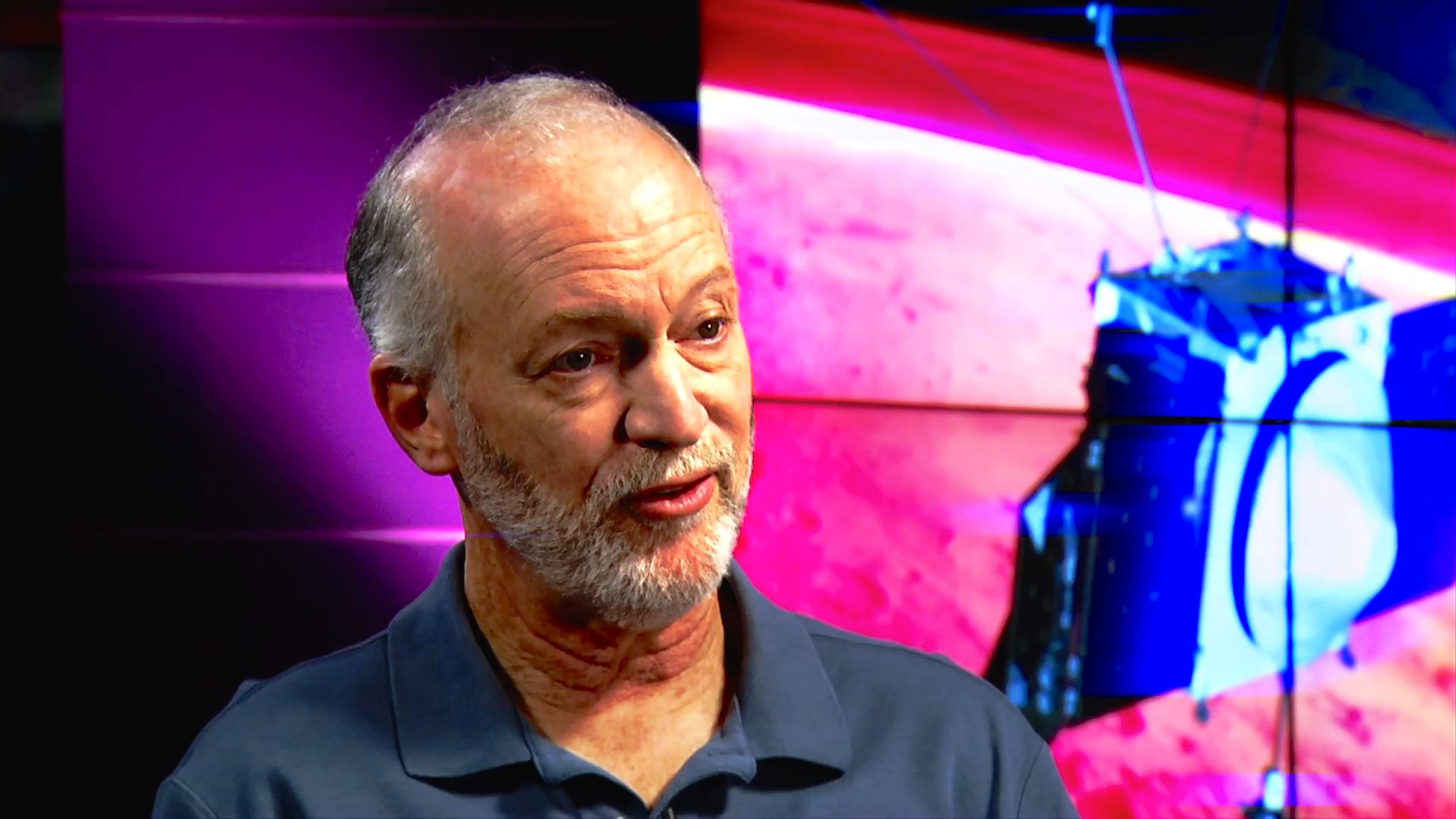MAVEN Stellar Occultation
NASA's Mars Atmosphere and Volatile Evolution mission (MAVEN) is the first spacecraft specifically designed to study the upper atmosphere of Mars. MAVEN's goal is to determine how Mars lost its thick early atmosphere, and with it, its once hospitable climate.
While previous Mars orbiters have peered down at the planet's surface, MAVEN is spending part of its time gazing at the stars, observing the Martian atmosphere through a series of stellar occultations. As Mars rolls beneath MAVEN, due to the spacecraft's own orbital motion, background stars rise and set behind the planet. Their light dims as it passes through the tenuous atmosphere, with specific gases absorbing specific wavelengths. MAVEN uses its Imaging Ultraviolet Spectrograph to break apart this light and see which wavelengths are absorbed, allowing it to determine atmospheric composition at varying altitudes.
MAVEN observes a stellar occultation with its IUVS instrument. By splitting apart the light of setting stars, MAVEN can determine the composition of the Martian atmosphere.
For More Information
See NASA.gov
Credits
Please give credit for this item to:
NASA's Goddard Space Flight Center Conceptual Image Lab
-
Animator
- Brian Monroe (USRA)
-
Scientists
- Bruce Jakosky (LASP)
- Nick Schneider (LASP)
-
Producer
- Dan Gallagher (USRA)
Release date
This page was originally published on Wednesday, September 2, 2015.
This page was last updated on Wednesday, May 3, 2023 at 1:49 PM EDT.
Missions
This page is related to the following missions:Series
This page can be found in the following series:Tapes
The media on this page originally appeared on the following tapes:-
MAVEN Sci Early
(ID: 2015007)
Monday, March 16, 2015 at 4:00AM
Produced by - Dan Jacob (Global Science and Technology, Inc.)
![During its first decade at Mars, MAVEN has helped to explain how the Red Planet evolved from warm and wet into the cold, dry world we see today. Complete transcript available.Universal Production Music: “Executive Deceit” by Samuel Karl Bohn [PRS], Chalk Music [PRS]; “Quasar” by Ross Stephen Gilmartin [PRS], Chappell Recorded Music Library Ltd [PRS]; “Modular Odyssey” and “Synthology” by Laetitia Frenod [SACEM], Koka Media [SACEM]Watch this video on the NASA Goddard YouTube channel.](/vis/a010000/a014600/a014690/MAVEN-10th-Anniversary-Preview.jpg)




